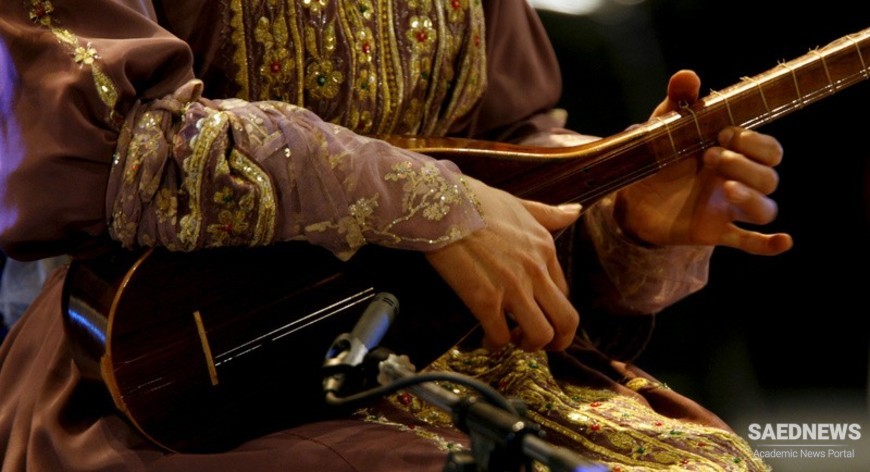The second degree in the process of westernization of Persian music, that is, fine changes that do not distort the basic texture and character of the music, occurs in the solo literature of the music of the radif. We have previously noted the increasing use of rhythmic pieces in contrast to the more traditional unmeasured style or avaz. Looking at the radif of Saba, which is reputedly, "more modern" than that of Macruffi, we found a greater number of compositions of the zarbi or rhythmic type. There are also changes in the harmonic idiom. Recently some of the microtones have been changed to full half tones. For example, anF-sori is now often changed to an F-sharp. Then there is the growing popularity for arpeggios on the tonic triad. Although this added flourish at the conclusion of a gusheh is widely played, it is not part of the traditional radif and is not included in any printed versions. Finally, it is becoming more and more usual to color passages by the addition of simultaneous thirds to one or more notes.These changes in the radif are not radical, nor are they occurring rapidly. In themselves, they do not constitute a threat to the continuation of traditional Persian music. A far more serious development is that the radif is now studied and performed less and less. At the Conservatory of National Music, students do study the radif and may spend several years in the process. But as they become more advanced, they prefer to play instrumental tasnif-ha and other rhythmic pieces that are admittedly more attractive to young people conditioned by Western music from the radio and cinemas of Tehran.(Source: Persian Classic Music).


 Tehran Music School in Qajar Era and Emergence of Modern Music in Persia
Tehran Music School in Qajar Era and Emergence of Modern Music in Persia














































